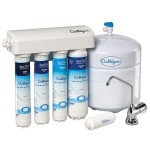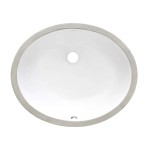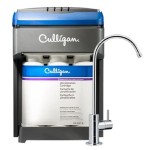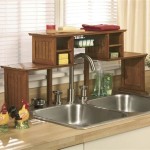Plumbing a Kitchen Sink with a Garbage Disposal
Plumbing a kitchen sink with a garbage disposal requires careful planning and execution. This process involves connecting the sink's drain lines, water supply lines, and the garbage disposal unit itself, while adhering to local plumbing codes. Understanding the necessary steps and components ensures a functional and leak-free installation.
Before beginning, gather the necessary tools and materials. These typically include a basin wrench, plumber's putty, pipe wrenches, screwdrivers, a dishwasher discharge hose (if applicable), flexible drain pipes (also known as P-traps), and the appropriate fittings and connectors. Always ensure the water supply to the sink is shut off before commencing any work.
The first step involves installing the garbage disposal unit. The disposal mounts to the underside of the sink's drain opening, typically secured with a mounting ring and screws. Following the manufacturer's instructions is crucial during this step, as different models may have specific mounting procedures. The mounting process often involves securing a mounting ring to the sink drain opening from above, then attaching the disposal unit to this ring from below.
Next, the drain lines must be connected. The disposal's discharge outlet connects to the drainpipe leading to the main sewer line. This connection typically involves a section of flexible drain pipe and appropriate slip nuts and washers to ensure a watertight seal. The drain line should be properly sloped to allow for efficient drainage and prevent clogs.
If the kitchen sink includes a dishwasher, its discharge hose must be connected to the garbage disposal. Most disposals feature a dedicated dishwasher inlet located on the side of the unit. This connection typically involves removing a knockout plug from the inlet and securing the dishwasher hose with a clamp.
Connecting the water supply lines is a critical step. The disposal requires a cold water supply for proper operation. This involves connecting a flexible water supply line to the designated inlet on the disposal unit and the corresponding shut-off valve under the sink. Ensure the connections are tight to prevent leaks. It's essential to use new supply lines to ensure reliability and prevent future issues.
After all connections are made, the water supply can be turned back on. Check thoroughly for leaks at all connection points. Run water through the sink and activate the garbage disposal to verify proper operation. Listen for unusual noises and observe the drainage to ensure no obstructions exist.
Addressing potential issues proactively is vital for long-term functionality. Leaks are a common problem and can occur at any connection point. If a leak is detected, ensure the connections are properly tightened. If tightening doesn't resolve the issue, the fitting or connection may need to be replaced. Clogs can also occur. If the sink drains slowly or not at all, check the P-trap for obstructions. A plumber's snake can be used to clear more stubborn clogs further down the drain line.
Understanding local plumbing codes is paramount. These codes dictate specific requirements for plumbing installations and ensure safety and proper functionality. Consulting local codes before beginning the installation process is crucial to avoid potential violations and ensure the installation meets regulatory standards. Permitting may be required in some jurisdictions, so verifying local regulations is essential.
Proper maintenance can extend the lifespan of the garbage disposal and prevent issues. Regularly flushing the disposal with cold water can help remove debris and keep it clean. Avoid putting hard-to-grind materials down the disposal, such as bones, fibrous vegetables, and starchy foods. Periodically grinding ice cubes can help sharpen the disposal blades and remove built-up food particles.
Different types of garbage disposals are available, each with varying features and capabilities. Batch feed disposals require a stopper to activate the grinding mechanism, offering an added layer of safety. Continuous feed disposals activate with a switch and allow for continuous grinding while the water is running. Consider the specific needs and preferences when selecting a garbage disposal unit.
Choosing the right materials is crucial for durability and longevity. Opt for high-quality plumbing fixtures and components that are designed for use with garbage disposals. Stainless steel sinks are highly durable and resistant to corrosion. Using appropriate piping materials, such as PVC or ABS, ensures proper drainage and prevents leaks.
Safety precautions are essential when working with plumbing and electrical components. Always disconnect the power supply to the garbage disposal before performing any maintenance or repairs. Wear appropriate safety glasses and gloves to protect against potential injury. If unsure about any aspect of the installation process, consult a qualified plumber to ensure the job is done correctly and safely.

Plumbing Dual Sink With Garbage Disposal Setup Home Improvement Stack Exchange
:max_bytes(150000):strip_icc()/garbage-disposal-buying-guide-2718864-hero-205069e72e6a4575b3131db47a6ace26.jpg?strip=all)
How To Choose The Best Garbage Disposal

Diy Kitchen Sink Plumbing With Garbage Disposal Start To Finish Step By

How To Install A Garbage Disposal In 9 Easy Steps

Install Best Sink Garbage Disposal Er S Guide In 2024

House Plumbing Examples Of Branching Garbage Disposal Sink Image

Best Garbage Disposals For Your Home The

Plumbing Dual Sink With Garbage Disposal Setup Home Improvement Stack Exchange

How To Install Dual Kitchen Sink Drain Plumbing Pipes

How To Install A Garbage Disposal True Value Hardware







